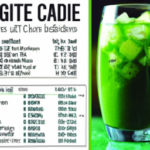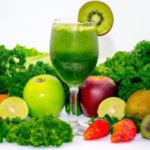Juice Tips and Tricks
How Many Calories Are In A Green Juice

As someone who is passionate about health and always looking for the latest addition to my diet, I am constantly intrigued by the calorie content of the food and beverages I consume. This curiosity peaks when I consider green juice, a beverage that has recently gained popularity due to its amazing health benefits.
In this article, I will explore how many calories are in a typical green juice, as well as factors that can affect its calorie count. Green juice is made up of a variety of fruits and vegetables, including leafy greens like spinach and kale, as well as fruits like apples and oranges.
It is often touted as a nutrient-dense drink that can help promote weight loss, boost energy levels, and improve overall health. However, one question that often arises is how many calories are in a typical green juice. While the answer can vary depending on the recipe and ingredients used, understanding the calorie content of green juice can be an important factor in maintaining a healthy diet.
Key Takeaways
- The calorie count of green juice varies depending on the ingredients and serving size.
- Portion control is important to avoid consuming too many calories.
- Using low-calorie vegetables like spinach, kale, cucumber, celery, and parsley can make a low-calorie green juice.
- Sugar content can be high, so it’s important to focus on using more vegetables and fewer fruits in the juice.
Understanding the Components of Green Juice
Let’s take a closer look at what goes into making a delicious and nutritious green juice. Juicing methods vary, but the most common ones include cold press, centrifugal, and masticating.
Cold press juicing is the most popular method because it extracts juice without heat, ensuring that the nutrients are not damaged. Centrifugal juicing, on the other hand, is a faster method that uses a high-speed blade to extract juice. Masticating juicing is the slowest method that works by grinding and pressing the juice out of the produce.
Green juice is a great source of vitamins, minerals, and antioxidants. It is made by blending green leafy vegetables such as spinach, kale, and celery with fruits like apples, pineapples, and bananas. The nutritional benefits of green juice are numerous; it helps to support digestion, boosts energy, and strengthens the immune system.
Green juice is also low in calories, making it an excellent option for those who are watching their weight. However, it’s essential to keep in mind that the calorie count can vary depending on the ingredients used.
As we delve deeper into understanding the components of green juice, it’s essential to note the importance of calorie counting.
The Importance of Calorie Counting
Counting calories is like keeping track of the fuel that goes into your car, ensuring it runs smoothly and efficiently. The importance of calorie counting can’t be overstated. It’s a crucial aspect of maintaining a healthy lifestyle. Here are some benefits of calorie counting:
-
Accountability: Keeping track of your calorie intake ensures you’re aware of what you’re putting into your body, making you more accountable for your choices.
-
Weight loss: Calorie counting is an effective tool for weight loss. By monitoring your calorie intake, you can create a calorie deficit, leading to weight loss.
-
Portion control: Calorie counting also helps with portion control. It allows you to keep track of how much you’re eating, ensuring you don’t overeat.
-
Nutrient-dense choices: Calorie counting encourages you to make nutrient-dense choices. You’re more likely to choose foods that are low in calories but high in nutrients, such as fruits and vegetables.
The importance of calorie counting can’t be overstated. It’s a tool that can help you achieve your weight loss goals, improve your overall health, and make better food choices. In the following section, we’ll discuss the average calorie content of green juice.
Average Calorie Content of Green Juice
If you’re looking for a healthy beverage option, check out the average calorie content of a popular green drink. Green juice is a low-calorie beverage that’s packed with nutritional value. The calorie density of green juice is typically low because it’s made up of mostly water and vegetables.
On average, an 8-ounce serving of green juice contains around 50-70 calories. In addition to being low in calories, green juice is also high in nutritional value. It’s a great source of vitamins and minerals, including vitamin C, vitamin K, potassium, and iron. Green juice is also rich in antioxidants, which can help protect the body against diseases such as cancer and heart disease.
Factors such as the type and amount of vegetables used, as well as any added fruits, can affect the calorie count of green juice.
Factors That Affect Calorie Count
When it comes to the calorie count of green juice, there are several factors that can affect it.
The serving size of the juice can greatly impact the calorie content, as can the types of fruits and vegetables used.
Additionally, any additional ingredients added to the juice can also contribute to the calorie count.
By understanding these factors, you can make informed decisions about the nutritional value of the green juice you consume.
Serving Size
You’ll want to take a close look at the serving size of your green juice to get an accurate idea of the calories you’ll be consuming. Calorie estimates can vary greatly depending on the amount of juice you drink. To give you an idea of how serving size can affect calorie count, take a look at this table:
| Serving Size | Calorie Count |
|---|---|
| 8 oz (1 cup) | 80-100 |
| 12 oz (1.5 cups) | 120-150 |
| 16 oz (2 cups) | 160-200 |
As you can see, portion control is key when it comes to consuming green juice. It’s easy to overdo it and consume too many calories if you’re not paying attention to the amount you’re drinking. So, be mindful of the serving size and adjust accordingly to meet your calorie goals.
Moving on to the next subtopic, the type of fruits and vegetables used in your green juice can also affect its calorie count.
Type of Fruits and Vegetables Used
The variety of fruits and veggies in your blend can significantly impact the nutritional value, with some combinations containing up to 100% of your daily recommended intake of vitamin C.
Green juice taste can vary depending on the type of fruits and vegetables used, but typically it has a refreshing and slightly sweet taste.
It’s best to drink green juice in the morning on an empty stomach, as this allows for better absorption of nutrients.
Adding additional ingredients, such as ginger or lemon, can enhance the taste of your green juice while also providing additional health benefits.
Ginger can help with digestion and reduce inflammation, while lemon can boost your immune system and aid in detoxification.
These ingredients can be added in small amounts to complement the flavors of the fruits and vegetables in your blend.
Additional Ingredients
To enhance the taste and health benefits of your blend, consider adding ginger or lemon in small amounts. These ingredients not only add a zesty flavor to your juice, but also provide additional health benefits.
For example, ginger has been known to relieve nausea and reduce inflammation, while lemon is high in vitamin C and can aid in digestion.
There are numerous juice recipes available, and incorporating additional ingredients can make them even more nutritious. Adding herbs such as parsley or cilantro can help detoxify the body, while adding a small amount of cayenne pepper can increase metabolism.
Experimenting with different fruits and vegetables can help you find the perfect blend of flavors and health benefits. When making a low-calorie green juice, it’s important to choose ingredients that are low in sugar and high in nutrients.
Incorporating leafy greens such as kale or spinach and limiting the amount of fruit used can help keep the calorie count low. In addition, using water or unsweetened almond milk as a base instead of fruit juice can also help reduce calories.
Tips for Making a Low-Calorie Green Juice
Making a low-calorie green juice can be a healthy choice, as it could contain only about 50-100 calories per serving. To make a low-calorie green juice, I recommend using vegetables that are naturally low in calories such as spinach, kale, cucumber, celery, and parsley. Using fruit in your green juice can add unnecessary calories, so it’s important to stick to vegetables if you’re looking to make a low-calorie option.
Juicing equipment can also play a role in the calorie count of your green juice. Centrifugal juicers tend to produce juice with more pulp, which means more fiber and fewer calories. On the other hand, masticating juicers produce less pulp and therefore, a smoother juice that may contain slightly more calories. It’s important to consider your taste preferences when choosing your juicing equipment, but keep in mind that a low-calorie green juice can still be delicious and satisfying.
A low-calorie green juice can have many benefits for your health. Not only can it help you maintain a healthy weight, but it’s also packed with vitamins, minerals, and antioxidants to support your overall wellbeing.
The Benefits of Low-Calorie Green Juice
You can reap the rewards of a low-calorie green juice by incorporating it into your daily routine, boosting your nutrient intake and supporting your overall health.
Low carb options like kale, cucumber, and celery are great choices for a low-calorie green juice. These vegetables are nutrient-dense and provide essential vitamins and minerals like vitamin C, vitamin K, and potassium.
Aside from being low in calories and carbs, green juices also offer a plethora of health benefits. They can help lower inflammation, improve digestion, and support healthy skin. The high amount of antioxidants in green vegetables also provide protection against free radicals, which can cause damage to our cells.
Incorporating a low-calorie green juice into your daily routine is an easy way to improve your overall health and wellbeing.
In the next section, we’ll discuss how to incorporate green juice into your diet seamlessly.
How to Incorporate Green Juice into Your Diet
Incorporating green juice into your diet can be as simple as adding a few leafy greens to your morning smoothie or swapping out sugary drinks for a refreshing vegetable blend. Green juice recipes are abundant, and you can experiment with different blends to find the taste that best suits your palate. The benefits of drinking green juice are numerous, including improved digestion, increased energy, and clearer skin.
To make it easier to incorporate green juice into your diet, here are three tips to get started: First, start with a simple recipe that includes only a few ingredients. Second, make a batch ahead of time and store it in the fridge for a quick grab-and-go option. Third, try to drink your green juice on an empty stomach to maximize its nutritional benefits.
By incorporating green juice into your daily routine, you can improve your overall health and well-being. However, it is important to note that green juice should not be used as a replacement for whole fruits and vegetables in your diet.
Other Health Considerations
When it comes to incorporating green juice into my diet, I also consider other health aspects beyond calorie intake.
For one, I pay attention to the sugar content of the green juice, as some fruits and vegetables used in juicing can be high in natural sugars.
Additionally, I strive to maintain a nutrient balance in my diet, and while green juice can provide a boost in vitamins and minerals, it shouldn’t replace whole foods entirely.
By being mindful of these factors, I can ensure that green juice is a beneficial addition to my overall health and wellness routine.
Sugar Content
Did you know that green juices can be high in sugar content due to the natural sugars found in fruits and vegetables? While these natural sugars can provide a quick burst of energy, consuming too much can lead to a spike in blood sugar levels and cause health problems in the long run.
To reduce sugar content in your green juice, it’s important to focus on using more vegetables and fewer fruits. Vegetables such as kale, spinach, and cucumber are low in sugar and high in nutritional value, making them ideal ingredients for green juices.
Reducing sugar content in your green juice can help you maintain a healthier diet and prevent health problems associated with high sugar intake. However, it’s important to remember that nutrient balance is also crucial in creating a healthy green juice.
In the next section, we’ll explore how to achieve a balanced nutrient profile in your green juice by incorporating a variety of ingredients.
Nutrient Balance
To create a balanced and nutritious green juice, you should aim to include a variety of ingredients that are nutrient-dense and can help balance your macros. Nutrient density refers to the amount of nutrients per calorie in a food, which means that higher nutrient density foods provide more essential vitamins and minerals per calorie. Balancing macros refers to including the right amount of carbohydrates, proteins, and fats in your juice to support your body’s needs.
One way to achieve nutrient balance in your green juice is by incorporating a variety of fruits and vegetables. For instance, leafy greens like kale and spinach are rich in vitamins A, C, and K, while fruits like apples and berries are high in fiber and antioxidants. To help you get started, here is a table that lists some nutrient-dense ingredients you can add to your green juice:
| Ingredient | Nutrients | Benefits |
|---|---|---|
| Spinach | Vitamins A, C, K, folate, iron | Promotes healthy skin and bone health |
| Kale | Vitamins A, C, K, calcium, potassium | Supports heart health and reduces inflammation |
| Celery | Vitamins A, K, folate, potassium | Helps regulate blood pressure and improves digestion |
| Cucumber | Vitamins K, C, potassium | Hydrates the body and supports healthy skin |
| Pineapple | Vitamin C, manganese, bromelain | Reduces inflammation and aids digestion |
By incorporating nutrient-dense ingredients and balancing your macros, you can create a green juice that is not only delicious but also packed with essential vitamins and minerals. Now, let’s move on to some green juice recipe ideas that you can try at home.
Green Juice Recipe Ideas
You can easily incorporate more nutrients into your diet by trying out different green juice recipes, like the one that packs a whopping 250% of your daily recommended intake of vitamin C!
When it comes to flavor combinations, the options are endless. One of my personal favorites is a combination of kale, spinach, cucumber, celery, lemon, and ginger. The kale and spinach provide a hearty dose of vitamin K, while the cucumber and celery add a refreshing crunch.
If you’re new to juicing, investing in a high-quality juicer can make a big difference in the quality of your juice. I recommend looking for a juicer that has a slow masticating process, as this helps to preserve the nutrients in the fruits and vegetables. Some popular juicer recommendations include the Omega J8006HDS and the Breville JE98XL.
Remember to always wash your produce thoroughly before juicing, and to use organic whenever possible to avoid consuming pesticides and other harmful chemicals.
Frequently Asked Questions
Can green juice be a replacement for a meal?
As a nutritionist, I can say that green juice can be a healthy addition to a meal, but it shouldn’t replace a meal entirely. While it offers benefits like high nutritional value, drawbacks include low calorie count and lack of satiety.
How does the calorie content of green juice compare to other types of juice?
When comparing juice calorie content, green juice typically has fewer calories than fruit juices. However, the nutritional value of green juice is higher due to its abundance of vitamins, minerals, and antioxidants.
Is it better to drink green juice in the morning or at night?
When it comes to drinking green juice, there are potential digestive benefits to drinking it in the morning. However, drinking it at night may disrupt sleep due to its high fiber content.
Can green juice help with weight loss?
As the saying goes, "you can’t outrun a bad diet."While green juice may aid in weight loss as part of a juice cleanse, it’s important to note that long-term results depend on overall nutrient absorption and a balanced diet.
How long does it take to see the health benefits of drinking green juice?
I’ve found that it can take anywhere from a few days to a few weeks to start experiencing the health benefits of drinking green juice. The juice cleanse can aid in the detoxification process and lead to improved digestion, clearer skin, and increased energy levels.
Conclusion
In conclusion, green juice can be an excellent addition to a healthy diet, but it’s important to be mindful of its calorie content. By understanding the components of green juice and factors that affect calorie count, you can make informed choices when making or purchasing a green juice.
Imagine starting your day with a refreshing green juice that not only nourishes your body with essential vitamins and minerals but also keeps your calorie intake in check. With a little creativity, you can make delicious low-calorie green juice recipes that suit your taste preferences and dietary needs.
So, go ahead and incorporate green juice into your diet, and reap the numerous health benefits it has to offer.
Susannah expertise lies in researching and compiling evidence-based content on juicing, nutrition, and overall health. She is committed to ensuring that The Juicery World offers accurate, up-to-date, and trustworthy information to empower readers to take control of their health. Susannah’s goal is to inspire individuals to embrace juicing as a way to nourish their bodies and live their best lives.
Juice Tips and Tricks
How to Make Aloe Vera Juice Taste Better

Tired of the strong flavor of aloe vera juice? No problem, we’ve got the answer for you.
In this article, we’ll share some tips and tricks to make your aloe vera juice taste better. We have tried and tested various methods to enhance the flavor without compromising the health benefits.
From choosing the right juice to adding natural sweeteners and infusing with fruits and herbs, we’ve got all the information you need to transform your aloe vera juice into a delightful and refreshing beverage.
Let’s dive in!
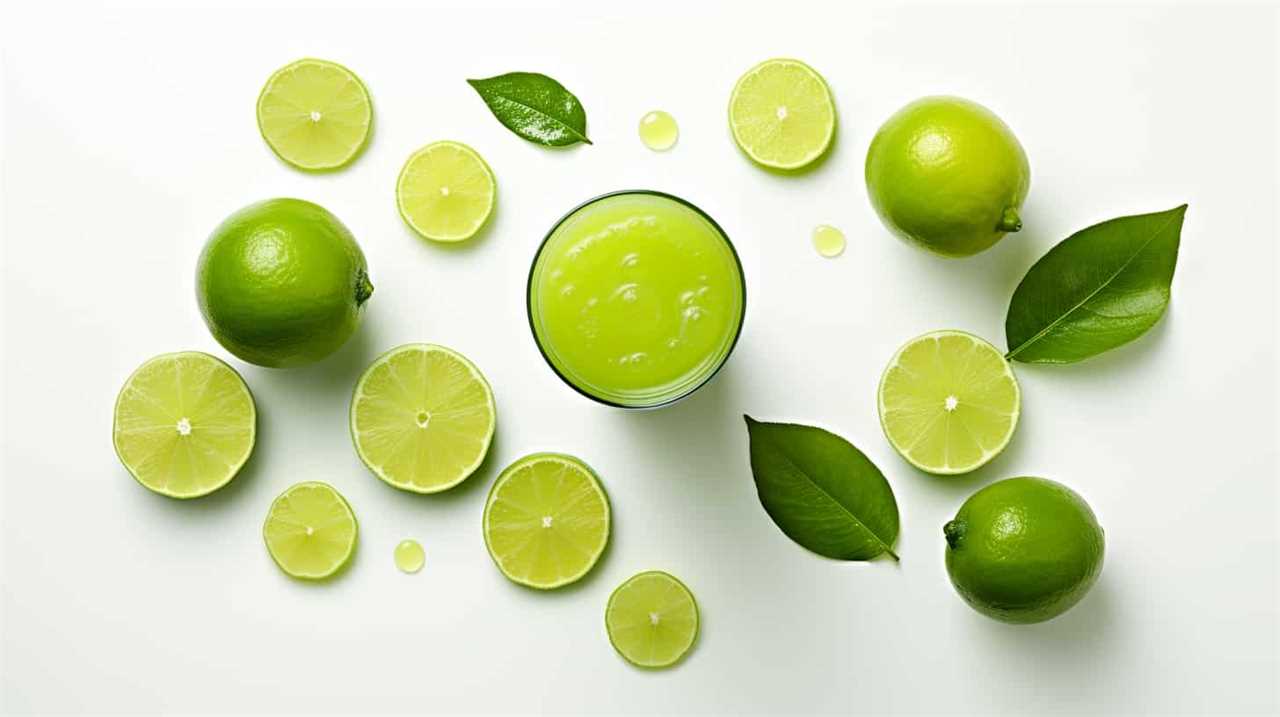
Key Takeaways
- Choose a reputable brand of aloe vera juice that prioritizes quality and uses organic, pure aloe vera.
- Avoid brands that contain added sugars or artificial ingredients.
- Use natural sweeteners like honey, agave syrup, or stevia to enhance the taste of aloe vera juice.
- Experiment with adding fruits, herbs, and other juices to create unique flavor combinations and enhance the health benefits of aloe vera juice.
Choosing the Right Aloe Vera Juice
We can enhance our experience with aloe vera juice by selecting the right brand and type for our preferences. When it comes to finding a reputable brand, it’s important to do some research and read reviews from other consumers. Look for brands that prioritize quality and use organic, pure aloe vera without any added sugars or artificial ingredients. Understanding the health benefits of aloe vera juice is also crucial in making the right choice. Aloe vera is known for its soothing properties, aiding digestion, promoting skin health, and boosting the immune system. By choosing a high-quality brand, we can ensure that we’re getting the maximum benefits from our aloe vera juice.
Now that we know how to choose the right brand, let’s move on to the next step of adding natural sweeteners.
Adding Natural Sweeteners
To enhance the flavor of our aloe vera juice, we can add natural sweeteners such as honey or agave syrup. Using alternative sweeteners not only adds sweetness but also brings unique flavors to the juice. Here are some options to consider:
- Stevia: A natural sweetener derived from the Stevia plant, it’s a zero-calorie alternative to sugar.
- Maple Syrup: This natural sweetener adds a rich and earthy flavor to the aloe vera juice.
- Dates: Pureed dates can be used to sweeten the juice while also providing essential nutrients like fiber.
In addition to using alternative sweeteners, we can enhance the flavor of aloe vera juice by adding spices and extracts. Cinnamon, ginger, or vanilla extract can add warmth and depth to the taste. By experimenting with different combinations of these natural sweeteners, spices, and extracts, we can create a flavor profile that suits our preferences.

Now, let’s move on to the next section and learn how to infuse aloe vera juice with fruits and herbs to further enhance its taste.
Infusing With Fruits and Herbs
As we explore ways to make our aloe vera juice taste better, one option to consider is infusing it with fruits and herbs. Creating unique aloe vera blends by adding fruits and herbs not only enhances the flavor but also adds a touch of freshness and complexity to the juice.
Fruits like strawberries, pineapple, or citrus can add a burst of sweetness, while herbs like mint, basil, or ginger can provide a subtle yet refreshing twist. Exploring the benefits of herbal infusions can also be beneficial for our health. For example, adding a few sprigs of lavender can promote relaxation and reduce stress. Additionally, infusing aloe vera juice with rosemary can aid digestion and boost the immune system.
Blending With Other Juices
Let’s try mixing aloe vera juice with different fruit juices to create delicious and refreshing blends. Blending aloe vera juice with other fruits not only enhances its taste but also adds nutritional benefits to your drink. Here are three fruit juices that you can mix with aloe vera juice:

- Orange juice: Combining aloe vera juice with orange juice not only adds a tangy flavor but also boosts your intake of vitamin C, which is essential for a strong immune system.
- Pineapple juice: Mixing aloe vera juice with pineapple juice creates a tropical blend that isn’t only refreshing but also helps in digestion. Pineapple contains bromelain, an enzyme that aids in breaking down proteins and promoting better digestion.
- Watermelon juice: Blending aloe vera juice with watermelon juice creates a hydrating and refreshing combination. Watermelon is rich in water content and contains electrolytes that can help replenish your body’s fluids.
Experimenting With Flavor Combinations
While we can try various flavor combinations with aloe vera juice, it’s important to find the right balance to enhance its taste. Experimenting with different flavors can’t only make the juice more enjoyable but also enhance its health benefits.
Aloe vera juice is known for its numerous health benefits, such as boosting digestion, promoting hydration, and supporting the immune system. By adding complementary flavors, we can create a refreshing summer drink that not only tastes great but also provides a nutritional boost.
Some popular flavor combinations include mixing aloe vera juice with citrus fruits like lemon or orange, adding a splash of coconut water for a tropical twist, or combining it with cucumber and mint for a refreshing and cooling effect.
Don’t be afraid to get creative and find the flavor combination that suits your taste buds best!

Frequently Asked Questions
Can I Use Store-Bought Aloe Vera Gel Instead of Fresh Aloe Vera for Making Juice?
Yes, you can use store-bought aloe vera gel instead of fresh aloe vera for making juice. However, it’s important to note that fresh aloe vera juice may have more health benefits due to its higher nutrient content.
How Long Can I Store Aloe Vera Juice in the Refrigerator?
Aloe vera juice can be stored in the refrigerator for up to a week. Refrigeration helps maintain the longevity and freshness of the juice, preserving its beneficial properties.
Can Aloe Vera Juice Help With Digestive Issues?
Aloe vera juice can potentially help with digestive issues when taken in appropriate dosages. However, it is important to note that there may be potential side effects. It is always best to consult with a healthcare professional before starting any new supplement regimen.
Can I Use Artificial Sweeteners Instead of Natural Sweeteners in My Aloe Vera Juice?
Using artificial sweeteners in aloe vera juice may affect its taste and potential health benefits. However, natural sweeteners like honey or stevia can enhance the flavor without compromising its nutritional value.

Is It Safe to Drink Aloe Vera Juice Every Day?
Drinking aloe vera juice daily can have numerous benefits, such as improving digestion and boosting the immune system. However, consuming it regularly may also lead to potential side effects like diarrhea or stomach cramps.
Conclusion
In conclusion, making aloe vera juice taste better is easy and enjoyable.
By choosing the right aloe vera juice and adding natural sweeteners, infusing with fruits and herbs, blending with other juices, and experimenting with flavor combinations, you can create a delightful and refreshing drink.
So go ahead and unleash your creativity in the kitchen, and transform your aloe vera juice into a sensational elixir that will transport your taste buds to paradise.
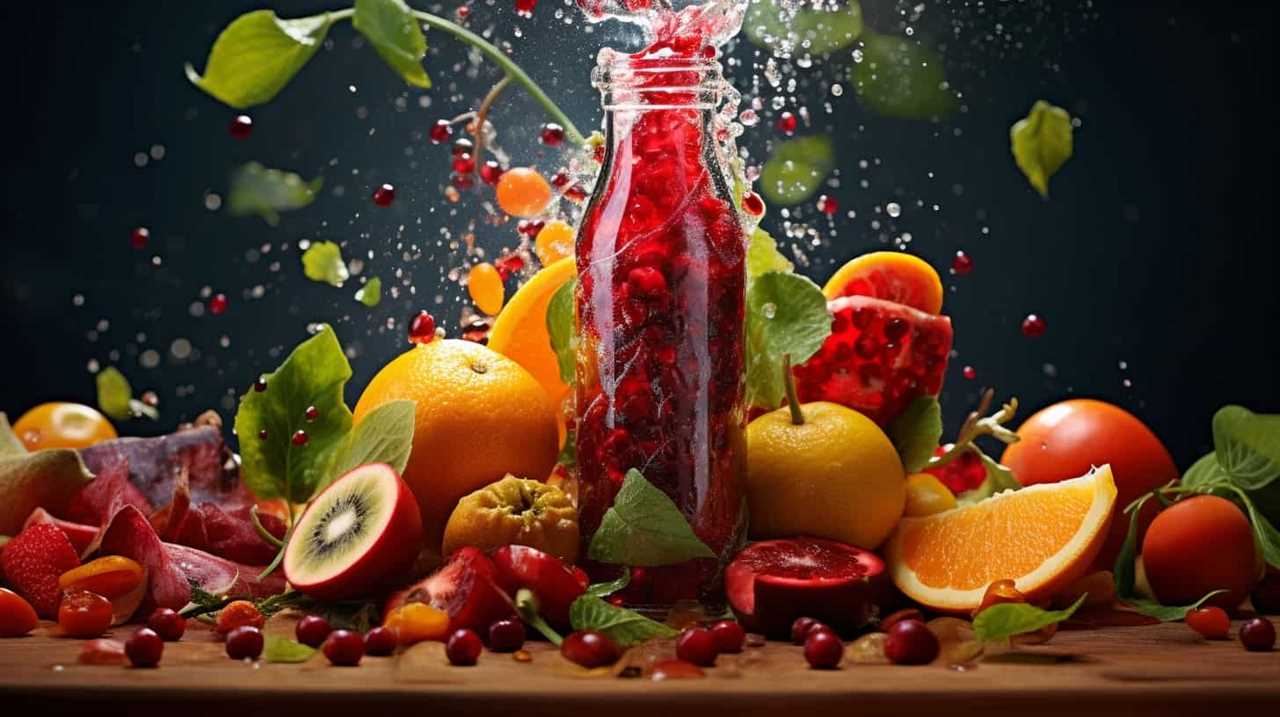
Susannah expertise lies in researching and compiling evidence-based content on juicing, nutrition, and overall health. She is committed to ensuring that The Juicery World offers accurate, up-to-date, and trustworthy information to empower readers to take control of their health. Susannah’s goal is to inspire individuals to embrace juicing as a way to nourish their bodies and live their best lives.
Juice Tips and Tricks
How to Make a Glass of Lemonade With Bottled Lemon Juice

Are you craving a cool glass of lemonade to quench your thirst? Look no further! Try out our perfect recipe using bottled lemon juice that will surely please your taste buds.
In this article, we’ll guide you through the process of creating a tangy and sweet concoction that will leave you feeling refreshed and satisfied.
So grab your ingredients and let’s get started on this delightful journey of serving ourselves and others a glass of pure lemony goodness.
Key Takeaways
- Consider the storage of the bottled lemon juice (dark glass or plastic bottles, protect from light exposure, check expiration date)
- Choose a suitable pitcher and fresh lemons for enhanced flavor
- Store the lemonade concentrate in the refrigerator to maintain freshness
- Adjust the sweetness and tartness to taste with sugar or more lemon juice, and experiment with different sweeteners or additional flavors.
Choosing the Right Bottled Lemon Juice
What are the key factors we should consider when selecting the right bottled lemon juice for our lemonade?

One important factor is how the lemon juice is stored. Look for bottles that are made of dark glass or plastic, as they help protect the juice from light exposure, which can degrade its quality. It’s also important to check the expiration date to ensure freshness.
Another benefit of using bottled lemon juice is convenience. It saves time and effort compared to squeezing fresh lemons. Additionally, bottled lemon juice provides consistent flavor, as the acidity levels are standardized.
When selecting a brand, consider reading reviews and checking for certifications, such as organic or non-GMO.
Gathering the Necessary Ingredients and Tools
How can we gather all the necessary ingredients and tools to make a glass of lemonade with bottled lemon juice?
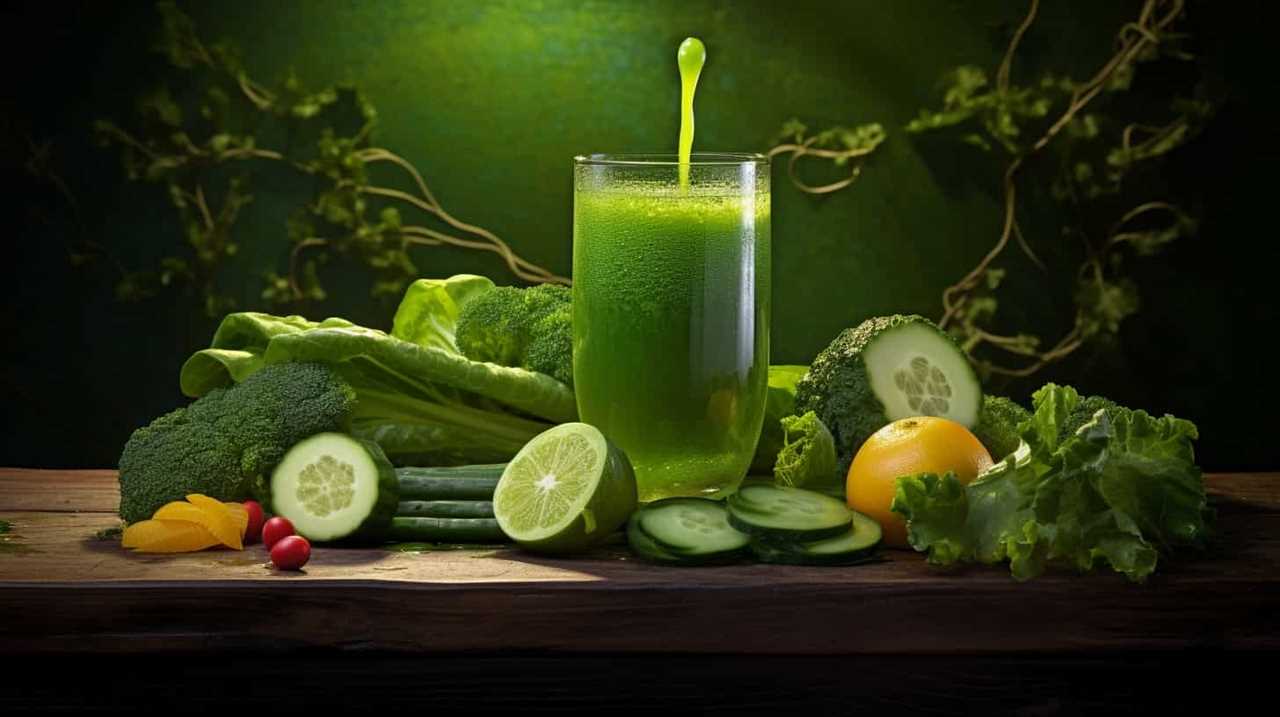
It’s important to start with the right pitcher. Look for a pitcher that’s made of glass or BPA-free plastic, as these materials won’t affect the taste of the lemonade. The pitcher should also have a lid or cover to keep the lemonade fresh and prevent spills.
Now, let’s talk about the lemons. While bottled lemon juice is convenient, using fresh lemons instead can elevate the flavor of your lemonade. Choose lemons that are firm and have a bright yellow color. Give them a gentle squeeze to ensure they’re juicy. To extract the juice, you’ll need a citrus juicer or a reamer. These tools make it easy to get every last drop of juice from the lemons.
Mixing the Lemonade Concentrate
To start mixing the lemonade concentrate, we’ll slowly pour the bottled lemon juice into the pitcher. It’s important to choose the right container for the lemonade concentrate. A pitcher with a lid or a tightly sealed container will help maintain the freshness and prevent any spills or leaks. Once the lemon juice is in the pitcher, we can move on to the next step of adding water and sweetener.
To ensure the lemonade concentrate stays fresh, it’s essential to store it properly. Keep the pitcher in the refrigerator to maintain its cool temperature and prevent any bacteria growth. If you have any leftover concentrate, transfer it to a smaller container with an airtight lid before refrigerating. This will help retain its flavor and prevent any contamination.
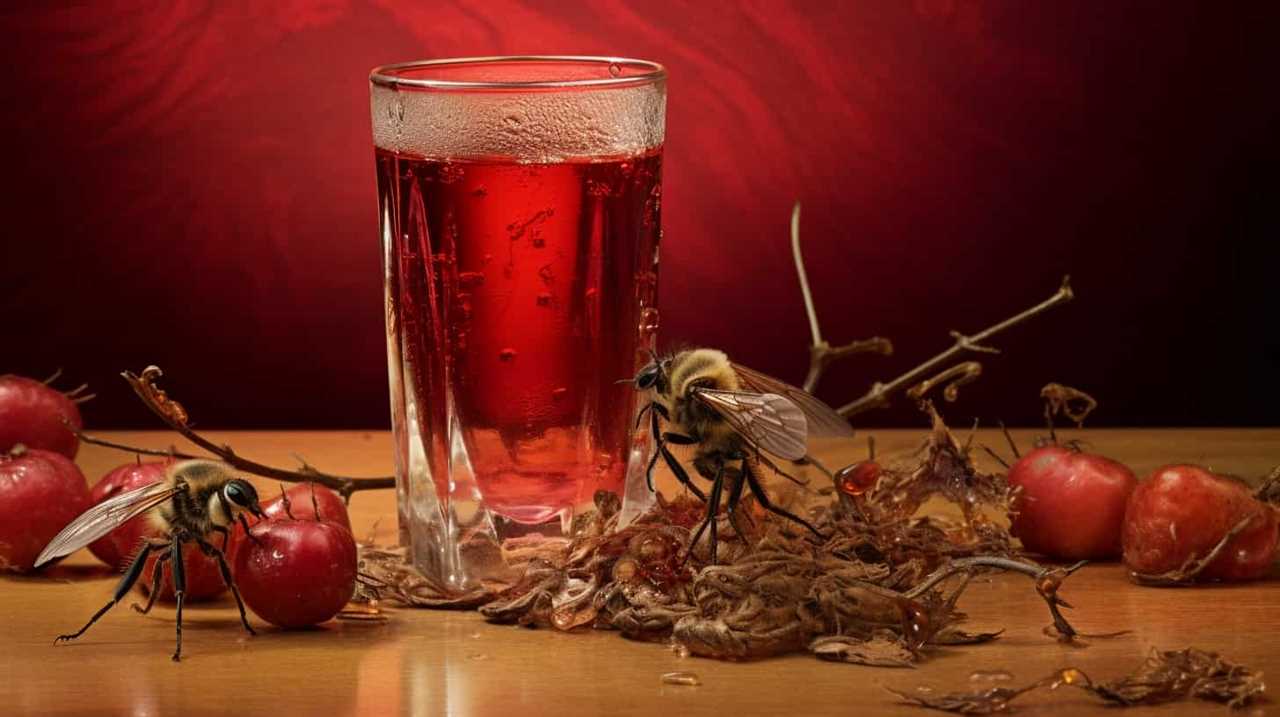
Now that we’ve mixed the lemonade concentrate, it’s time to adjust the sweetness and tartness to taste.
Adjusting the Sweetness and Tartness to Taste
We can adjust the sweetness and tartness of the lemonade to taste by adding more sugar or lemon juice, respectively. If you prefer a sweeter lemonade, simply add more sugar and stir until it dissolves completely. You can experiment with different sweeteners such as honey or agave syrup to find the perfect balance of sweetness.
On the other hand, if you want a tangier lemonade, add more lemon juice gradually, tasting as you go until it reaches your desired level of tartness.
Additionally, you can get creative with your lemonade by adding flavors like fresh mint leaves or a hint of lavender. These additions can elevate the flavor profile and create a more refreshing and unique experience.

Now that we’ve adjusted the sweetness and tartness of our lemonade, let’s move on to serving and enjoying your refreshing glass of lemonade.
Serving and Enjoying Your Refreshing Glass of Lemonade
Now let’s sit back, relax, and savor our refreshing glass of lemonade.
When it comes to serving and enjoying this delightful drink, there are a few techniques and garnishing options to consider.
Firstly, serving your lemonade chilled is essential for maximum enjoyment. Ensure that you have chilled glasses or add ice cubes to the glasses before pouring the lemonade.

To add a touch of elegance, you can garnish your lemonade with a slice of lemon on the rim of the glass. For an extra burst of flavor, you could also add a sprig of fresh mint or a few berries.
Remember to gently stir the lemonade before serving to evenly distribute the flavors.
Now, take a sip, feel the refreshing tang of lemon, and let the sweet and tart flavors dance on your taste buds.
Cheers!
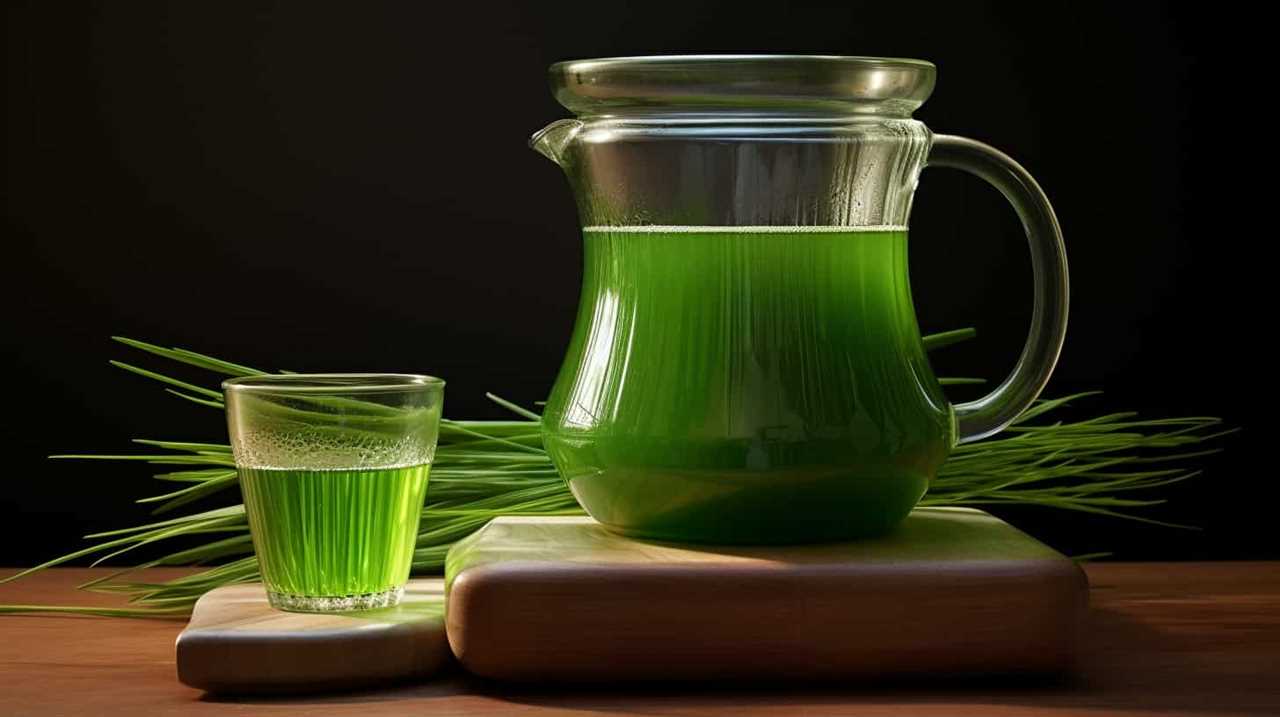
Frequently Asked Questions
Can I Use Fresh Lemons Instead of Bottled Lemon Juice?
Fresh lemons offer numerous benefits over bottled lemon juice. The taste of fresh lemons is unparalleled, providing a vibrant and tangy flavor. Incorporating fresh lemons into your lemonade will elevate its taste and give it a refreshing and authentic twist.
Can I Substitute Sugar With a Different Sweetener?
Substituting sweeteners in lemonade can enhance the flavor and offer health benefits. We’re knowledgeable about alternative sweeteners and can provide precise, detailed instructions on using them in place of sugar.
How Long Does the Lemonade Concentrate Need to Chill in the Refrigerator?
The chilling time for the lemonade concentrate in the refrigerator is typically around 1-2 hours. Using bottled lemon juice offers the benefit of convenience and consistent flavor for a refreshing glass of lemonade.
Can I Add Other Fruits or Flavors to the Lemonade?
Sure, we can definitely add different fruits or flavors to our lemonade. It’s a great way to experiment with unique flavors and create refreshing, personalized drinks. The possibilities are endless!

How Long Does the Lemonade Stay Fresh in the Refrigerator?
Lemonade made with bottled lemon juice can stay fresh in the refrigerator for about 5-7 days. To maximize shelf life, store it in an airtight container and keep it chilled.
Conclusion
And so, with a few simple steps and the right ingredients, a glass of refreshing lemonade is born.
Like a symphony of flavors dancing on your taste buds, this tangy elixir quenches thirst and brings joy on a hot summer day.
Just a sip transports you to a world of citrusy delight, where the sweetness and tartness blend harmoniously.

So go ahead, indulge in the art of lemonade-making and savor every drop of this sun-kissed nectar.
Cheers to the perfect glass of lemonade!
Susannah expertise lies in researching and compiling evidence-based content on juicing, nutrition, and overall health. She is committed to ensuring that The Juicery World offers accurate, up-to-date, and trustworthy information to empower readers to take control of their health. Susannah’s goal is to inspire individuals to embrace juicing as a way to nourish their bodies and live their best lives.
Juice Tips and Tricks
How to Know if Orange Juice Is Bad

We’ve all been in that situation before – reaching for a glass of orange juice and hesitating, unsure if it’s still okay to drink. Fear not! This article will give you the knowledge you need to determine for sure if your orange juice is still fresh or if it’s gone bad.
With a blend of scientific precision and practical tips, we’ll explore color changes, strange smells, off taste, texture changes, and mold or growth that may indicate spoilage.
Let’s dive in and serve ourselves a refreshing glass of certainty!
Key Takeaways
- Color changes in orange juice can indicate a loss of freshness and shelf life extension, but it doesn’t necessarily mean the juice is bad.
- Unusual or off-putting odors in orange juice, such as sour or fermented scents, can be a sign of poor quality.
- An off taste in orange juice, such as sour, bitter, or fermented flavors, suggests that the juice is spoiled.
- Texture changes in orange juice, such as pulp separation or a thicker consistency, can occur as the juice ages, so it’s important to consume it before the expiration date.
Color Changes in Orange Juice
We should be aware that color changes can indicate whether orange juice is bad.

When it comes to orange juice, color is a crucial factor to consider. As oranges are exposed to air, an oxidation process occurs, which leads to changes in color. Fresh orange juice has a vibrant orange hue, indicating its freshness and high nutritional value.
However, as time passes, the juice may undergo a color change, turning dull or brownish. This change in color is a result of the oxidation process, which affects the flavor and quality of the juice. It’s important to note that while a change in color doesn’t necessarily mean the juice is bad, it does indicate that the juice is losing its freshness and shelf life extension.
Therefore, it’s advisable to consume orange juice when it’s at its freshest, as indicated by its vibrant orange color.
Strange Smells in Orange Juice
When it comes to evaluating orange juice, we should be cautious of any strange smells or odors. A fresh, pleasant smell is indicative of good quality orange juice. However, if you notice any unusual or off-putting odors, it may be a sign that the juice has gone bad. These smells can range from a sour or fermented scent to a rancid or moldy aroma.

It’s important to note that while some natural variations in scent can occur due to the specific variety of oranges used, any strong or unpleasant smells should raise concerns. If you have citrus fruit allergies, it’s especially important to pay attention to the smell of orange juice, as it could indicate the presence of spoilage or contamination.
Ensuring the quality of orange juice is essential as it’s a popular beverage known for its health benefits, including being rich in vitamin C and antioxidants.
Off Taste of Orange Juice
Our taste buds can detect even the slightest hint of an off taste in orange juice, which can indicate that it has gone bad. The taste of orange juice should be fresh, tangy, and slightly sweet. If it tastes sour, bitter, or fermented, it’s likely spoiled.
One common cause of an off taste in orange juice is the use of overripe oranges. When oranges become overripe, their flavor profile changes, resulting in a less pleasant taste. Another factor to consider is the expiration date. Orange juice that has passed its expiration date is more likely to develop an off taste. It’s important to check the expiration date before consuming orange juice to ensure its freshness and quality.
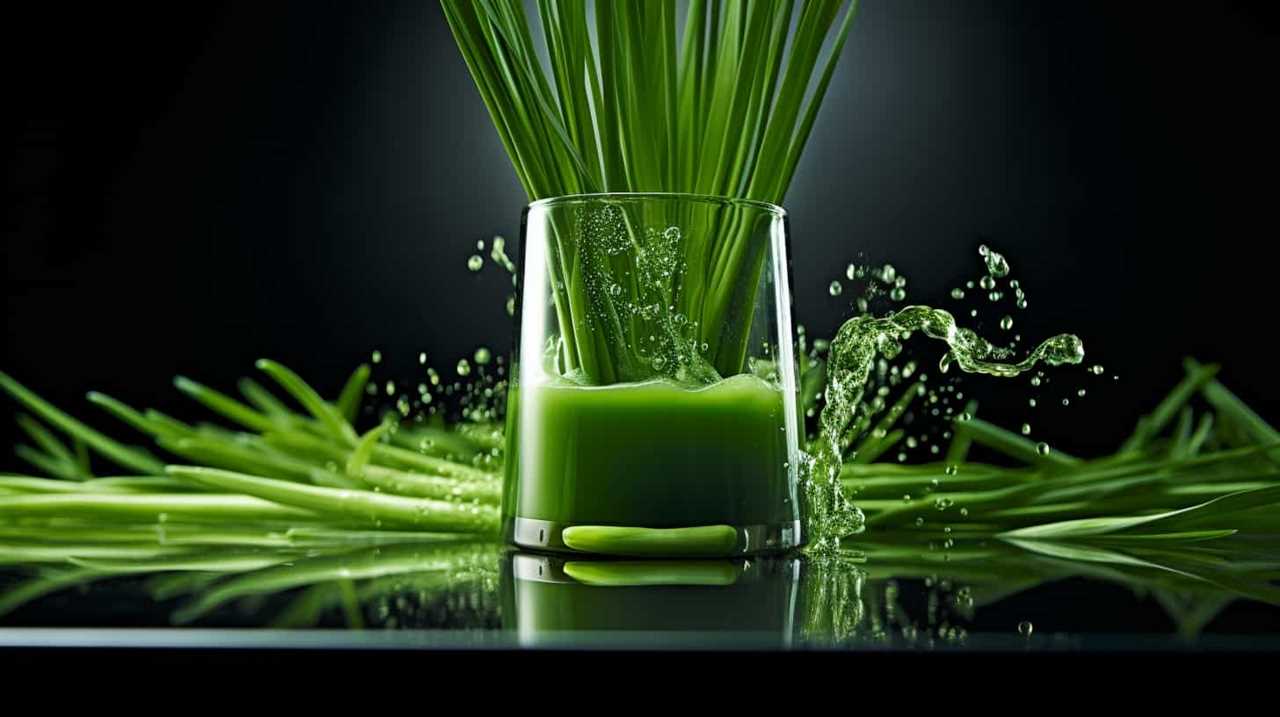
Now, let’s move on to discuss the texture changes in orange juice.
Texture Changes in Orange Juice
As we explore the texture changes in orange juice, it’s important to note that certain factors can cause it to become thicker or develop sediment. One common texture change in orange juice is pulp separation, where the pulp separates from the liquid and settles at the bottom. This can occur naturally over time, as the pulp particles become denser and sink.
Another factor that can affect the texture of orange juice is the expiration date. As orange juice ages, it may start to develop a thicker consistency and even form sediment. This is a result of the natural breakdown of the juice’s components. Therefore, it’s crucial to check the expiration date on orange juice and consume it before it reaches its expiration date to avoid any undesirable texture changes.
Mold or Growth in Orange Juice
We need to be aware of the possibility of mold or other growth occurring in orange juice. Mold can develop in orange juice if it isn’t stored properly or if it has passed its expiration date.
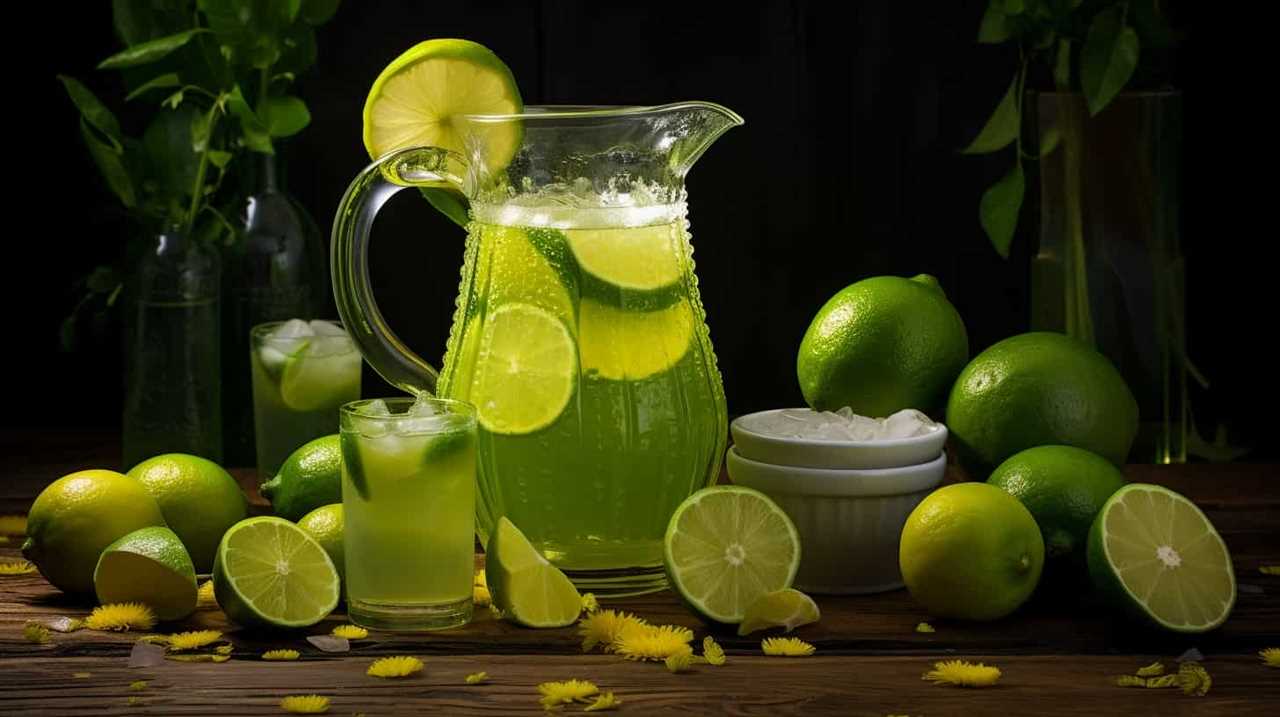
To prevent mold growth, it’s important to follow these steps:
- Store orange juice in the refrigerator at a temperature below 40°F (4°C).
- Check the expiration date on the bottle before consuming. Discard any orange juice that has expired.
- Keep the container tightly sealed to prevent air and moisture from entering, as these can promote mold growth.
Regularly inspecting orange juice for any signs of mold or unusual growth is essential. If you notice any discoloration, a strange odor, or visible mold, it’s best to discard the juice to avoid any potential health risks.
Frequently Asked Questions
Can Orange Juice Go Bad if It’s Stored in the Freezer for Too Long?
Frozen orange juice can potentially lose its nutrients and change its taste if stored in the freezer for too long. It is important to check for signs of spoilage before consuming it.
How Long Can Orange Juice Stay Fresh in the Refrigerator Once It’s Opened?
Once opened, orange juice can stay fresh in the refrigerator for about 7-10 days. To maintain its freshness, store it properly by keeping it tightly sealed and at a consistently cold temperature.
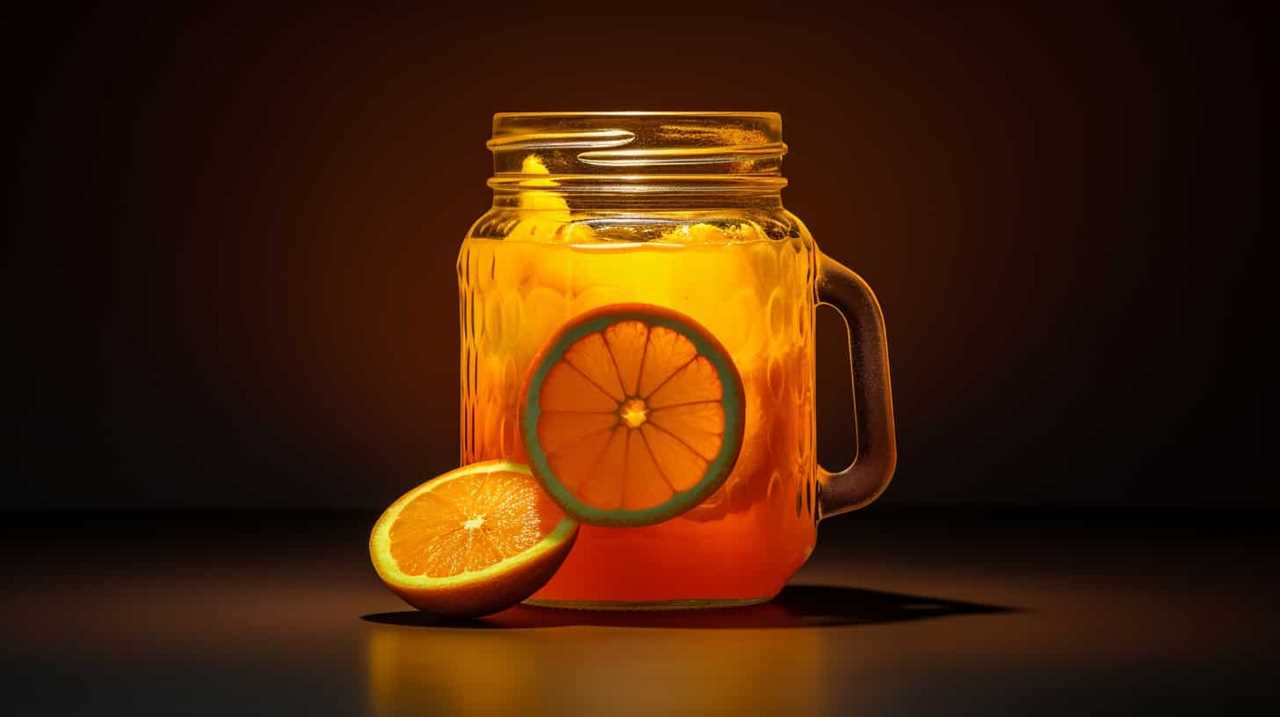
Is It Safe to Consume Orange Juice That Has Been Left Out at Room Temperature Overnight?
Left out orange juice may not be safe to drink as it can harbor harmful bacteria. Signs of spoiled orange juice include a sour smell, mold growth, and a change in color or taste.
Can Orange Juice Develop Harmful Bacteria if It’s Past Its Expiration Date but Still Looks and Smells Fine?
Orange juice can cause food poisoning if it develops harmful bacteria, even if it looks and smells fine. Signs of spoiled orange juice include a sour smell, mold growth, and a change in color or taste.
Does the Nutritional Value of Orange Juice Decrease as It Starts to Go Bad?
As orange juice goes bad, its nutritional value decreases. The longer it sits on the shelf, the more nutrients it loses. Signs of spoilage include a sour smell, off taste, and mold growth.
Conclusion
In conclusion, determining if orange juice is bad requires careful observation of color changes, strange smells, off taste, and texture changes. Just like a detective investigating a case, we must rely on our senses to detect any signs of spoilage.
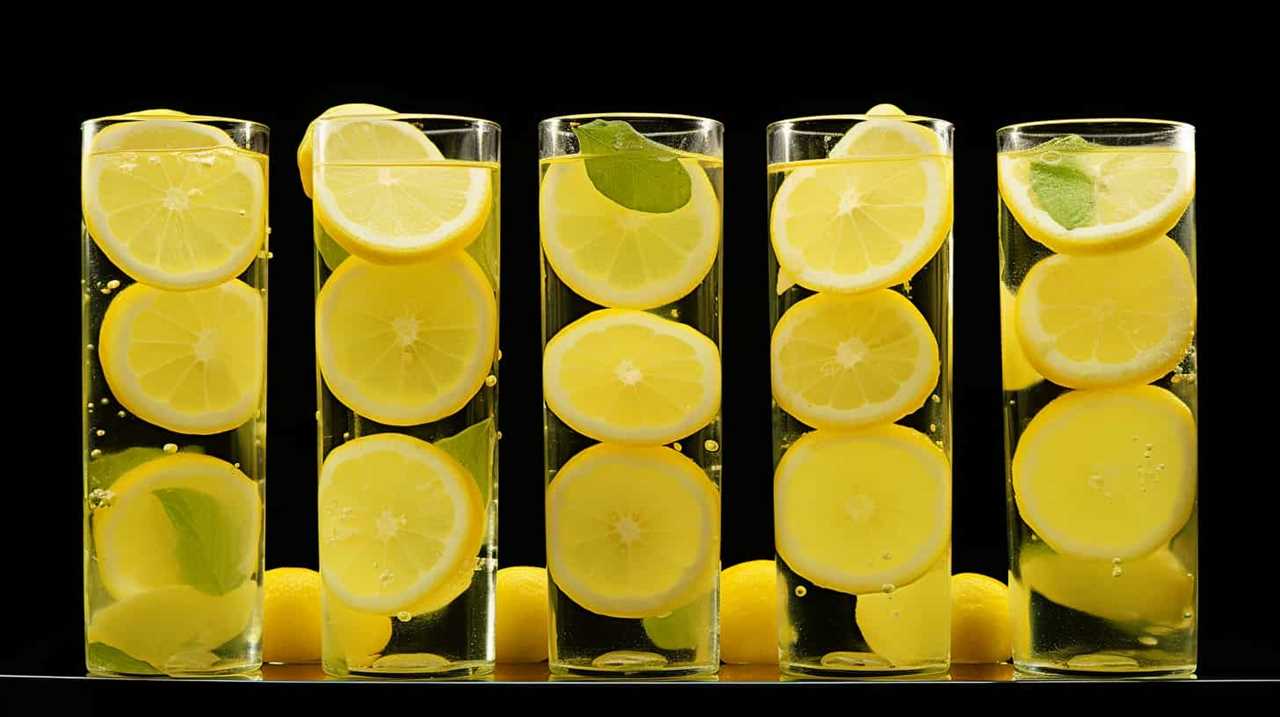
If we detect mold or growth in the orange juice, it’s a clear indication that it’s no longer safe to consume. By remaining vigilant and attuned to these indicators, we can ensure that our orange juice is always fresh and enjoyable.
Susannah expertise lies in researching and compiling evidence-based content on juicing, nutrition, and overall health. She is committed to ensuring that The Juicery World offers accurate, up-to-date, and trustworthy information to empower readers to take control of their health. Susannah’s goal is to inspire individuals to embrace juicing as a way to nourish their bodies and live their best lives.
-

 Juice Tips and Tricks3 months ago
Juice Tips and Tricks3 months agoHow To Make Homemade Pickle Juice
-

 Juice Tips and Tricks3 months ago
Juice Tips and Tricks3 months agoHow Much Lemon Juice Is Equal To Half A Lemon
-

 Juice Tips and Tricks3 months ago
Juice Tips and Tricks3 months agoHow Much Lemon Juice Concentrate Equals One Lemon
-

 Juice Tips and Tricks2 months ago
Juice Tips and Tricks2 months agoHow Long Can You Drink Orange Juice After The Expiration Date
-

 Fruit Juice Varieties2 months ago
Fruit Juice Varieties2 months agoTop 11 Most Loved Fruit Juice Varieties
-

 Juice Tips and Tricks3 months ago
Juice Tips and Tricks3 months agoHow Much Lemon Juice Is Equivalent To 1 Lemon
-

 Juice Tips and Tricks3 months ago
Juice Tips and Tricks3 months agoHow Much Lemon Juice Is Equivalent To One Lemon
-

 Organic and Natural Juices2 months ago
Organic and Natural Juices2 months ago8 Best Organic Brands for Fruit Juice




